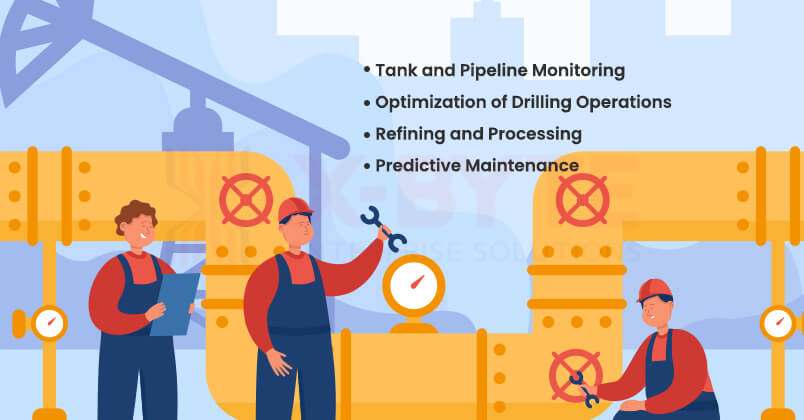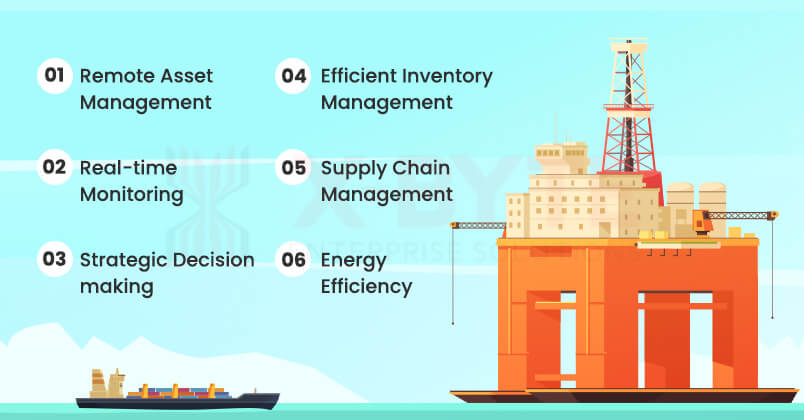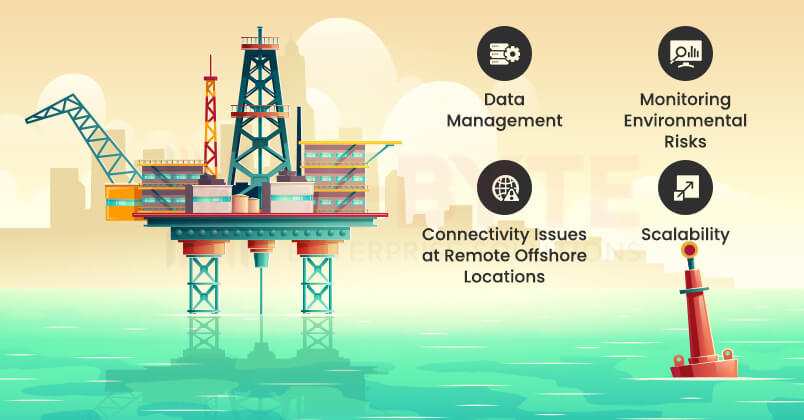-
solutinos
-
Hire
Frontend Developer
Backend Developer
-
NodeJS Developer
-
Java Developer
-
Django Developer
-
Spring Boot Developer
-
Python Developer
-
Golang Developer
-
Ruby on Rails Developer
-
Laravel Developer
-
.NET Developer
Technology
-
Flutter Developer
-
React Native Developer
-
Xamarin Developer
-
Kotlin Developer
-
Cross-Platform Developer
-
Swift Developer
-
MongoDB Developer
-
C Developer
-
Smart Contract Developers
Cloud
-
-
Services
Mobile Development
Web Development
- Work
-
Multi Services App
-
Food Delivery App
-
Grocery Delivery App
-
Taxi Cab Booking App
-
Multi Services App
-
OTT Platform APP
-
Social Media APP
-
Freelance Service App
-
Car Rental App
-
Medicine Delivery App
-
Liquor Delivery App
-
Sports Betting App
-
Online Coupon App
-
eLearning App
-
Logistics & Transportation App
-
Courier Delivery App
-
On-Demand Real Estate App
-
E-Wallet APP
-
Online Dating App
-
Handyman Services App
-
-
Process
-
Company

Quick Summary : IoT in the Oil and Gas industry eases monitoring workflows of upstream, downstream, and midstream extraction processes. From tracking offshore oil tanks’ inventory levels to analyzing oil composition within pipelines with acoustic sensors, IoT is a smart tech with multiple use cases in the Oil & Gas sector. IoT sensors & devices expedite oil exploration & drilling operations, improve asset maintenance, and also reduce employee hazard risks.
The Internet of Things helps in smoothly collecting, integrateing, and analyzing large volumes of data in real-time in the oil and gas industry. It helps monitor processes to boost operational efficiency and profitability. This modern technology also assists in reducing energy consumption and managing processes.
At the time of transportation of oil and gas, IoT-integrated monitoring and tracking systems assist in improving supply chain processes. It helps in reducing the risk of accidents and leakages. The experts at X-Byte provide enhanced IoT app development services to expand the efficiency of business processes. Modern IoT applications in oil and gas help implement interconnected systems, devices, and sensors.
Statistics on IoT in the Oil and Gas Industry
- The application Internet of Things in Oil and Gas industry is expected to grow to $22.24B from 2022 to 2029.
- As per the report of McKinsey & Company, IoT will have an economic value between $ 3.9 trillion to $ 11.1 trillion by the year 2025.
- As per the latest reports, the Internet of Things (IoT) globally is expected to grow at 23% CAGR approx during 2023-2028.
Role of IoT in the Oil and Gas Industry

IoT technology provides extensive insights to foster automated processes. It plays a major role in transforming the oil and gas industry.
The expansion of IoT helps oil and gas companies with sustainable and secure monitoring for real-time leak detection and prevention. For tank monitoring, IoT sensors help remotely monitor tanks and boost operational efficiency and decision-making.
Optimization of Drilling Operations
The IoT-enabled sensors for smooth drilling process help in smooth data collection and process the crucial information to determine equipment performance. This assists in real-time tracking to provide proactive measures and smooth working of drilling tools.
Refining and Processing
Transform the oil and gas business with IoT to ensure production management with automated operations. These advanced sensors help refine processes, enhancing productivity and efficiency.
Predictive Maintenance
Advanced IoT systems help in taking proactive measures to streamline routine processes with predictive maintenance. There are several approaches like:
- Smooth data collection and sensor networks
- Advanced data analytics and ML
- Enhanced maintenance
- Remote tracking and monitoring
Business Benefits of IoT in the Oil and Gas Industry

IoT helps in smooth decisions to gain a competitive advantage and drive innovation. With modern technology, the oil and gas segment provides enhanced efficiency, ensuring the accuracy and reliability of the solution.
Remote Asset Management
Oil and gas organizations require real-time analysis and monitoring of various equipment and assets to boost productivity and ensure the uptime of diverse assets. IoT technology helps enhance energy consumption and product yield.
Real-time Monitoring
Most of the oil and gas organizations face the major risk of accidents and a lack of data security. It is essential to ensure safe and secure monitoring with real-time alerts to detect hurdles and take proactive actions to reduce downtime.
Transform your business with IoT technology for the oil and gas segment to get streamlined and safe operations!
Strategic Decision making
IoT-enabled systems help get enhanced insights to ensure smooth decision-making. This assists in optimizing internal processes and reducing expenses.
Efficient Inventory Management
Automated inventory management and tracking will ensure optimum resource utilization. This will reduce the risk of stock shortages and overstocking and boost operational efficiency.
Supply Chain Management
Advanced IoT systems and sensors help enhance supply chain management by offering real-time representation of processes, such as crude oil extraction, preprocessing, and supply to various stations.
Energy Efficiency
Implementing IoT sensors and systems can help oil and gas businesses easily optimize energy consumption. This can boost operational efficiency by reducing energy waste.
Real-world Use Cases of IoT in Oilfield Exploration
Upstream
Enhance drilling and smooth extraction management solutions by utilizing advanced technologies.
Asset Monitoring
Advanced IoT sensors are deployed in real-time to monitor equipment performance, drilling rigs, and wellheads. This helps take proactive measures and schedule maintenance to ensure smooth performance.
Remote Monitoring
IoT technology helps in the real-time monitoring of diverse operations from a centralized system. This assists in taking prompt action if operators face any issues.
Midstream
Improve pipeline and storage maintenance with IoT-enabled solutions.
Pipeline Monitoring
The modern IoT sensors are placed along with the pipelines. This helps them in smoothly monitoring temperature, flow, and pressure. This comprehensive data helps detect problems that hinder smooth flow.
Predictive Maintenance
IoT helps midstream organizations analyze diverse datasets to reduce downtime by reducing the risk of uncertain events.
Downstream
Get highly optimized distribution and processing of Oil and gas with IoT-enabled systems.
Refinery Optimization
Modern IoT sensors and systems help diverse refineries seamlessly monitor equipment performance and streamline internal processes. This reduces energy consumption and boosts efficiency and productivity.
Inventory Management
Smart IoT devices help in managing and monitoring inventory. It includes distribution centers, storage spaces, and tanks to optimize product availability.
Business Challenges in Adopting IoT in the Oil and Gas Industry

Data Management
The IoT devices generate large volumes of data that require safe and secured data management systems. It requires enhanced data management, analysis, and integration strategies with existing platforms. This can be resolved by integrating advanced analytics, IoT, and edge computing technologies to ease complex processes and get data insights.
Monitoring Environmental Risks
Fluctuating temperatures and environmental conditions are uncontrollable and create a significant challenge for the organization. Additionally, corrosive and explosive elements become a risk to ensure smooth flow. This challenge can be resolved by outsourcing to expert service providers for robust solutions with industry-grade IoT features. This system helps with predictive forecasting and proactive measures.
Connectivity Issues at Remote Offshore Locations
Due to network issues, pipelines and the movement of oil and gas can't be tracked smoothly in various locations. However, this can be resolved by establishing connectivity using a hybrid solution. This includes integrating terrestrial networking solutions and satellites. The oil and gas industry also uses LPWAN to ensure low-power connectivity requirements.
Scalability
IoT systems may face scalability challenges with the growing need for data management and multi-device management. This hampers the smooth functioning of processes and the ability to overcome data complexity. Integrating smart sensors allows oil and gas businesses to obtain highly scalable IoT devices.

Boost the oil and gas business operations to stay ahead of the competition with highly secured solutions!
Contact Now Contact NowHow Our Expertise Assists the Oil and Gas Industry
As an experienced IoT app development service provider, we understand the potential of IoT technology to streamline oil and gas companies' processes. Our expertise helps businesses and startups in the industry develop feature-rich platforms.
Management of Upstream hurdles
X-Byte provides custom app development services to ensure smooth monitoring of upstream processes like extraction and drilling activities. Our experts also ensure:
- High-performing solutions with top-notch security to ensure streamlined processing and storing of the oil and gas data for a specific location.
- Seamless integration of IoT devices and sensors to collect and manage large volumes of data from different locations.
- Implementing advanced analytics and other modern technologies to create predictive analytics and maintenance strategies.
Management of Midstream Processes
Our dedicated IoT app development team is highly experienced in working with diverse modern tools and technologies of data analytics and other integration platforms. This helps businesses ensure uninterrupted workflow and connectivity with enhanced data management capabilities. The oil and gas segment can achieve operational efficiencies to ensure smooth midstream operations by:
- Integrating smart sensors and devices in midstream operations streamlines routine processes and optimizes transportation. This helps facilitate product delivery by fulfilling the necessary regulations.
- Get real-time data collection, monitoring, preprocessing, and management to make strategic decisions.
- Select the advanced platforms with IoT integration to streamline midstream operations.
Boosting Downstream Efficiency
Get access to our extensive expertise to determine the scope of advanced IoT technology to boost downstream productivity. Modern technology helps take proactive measures to optimize the supply chain and ensure secure process monitoring.
Conclusion
Integrate advanced IoT tools to streamline diverse routine processes and ensure strategic decision-making. Utilizing IoT for oil and gas exploration and production helps streamline business processes and provide high-tech solutions. This assists in reducing operational costs and boosting productivity. X-Byte as an organization is dedicated to provide the best IoT solutions to Oil and gas industrial using connected devices.
Frequently Asked Questions
-
What are the common applications of IoT in
the oil and gas industry?
The IoT is employed in the oil and gas industry for
- Smooth monitoring, tracking, and managing assets
- Detecting leaks
- Drilling
- Maintaining equipment and machinery
- Big data analytics.
-
What are the benefits of IoT in the oil and
gas industry?
- Enhanced Operational Efficiency
- Predictive Maintenance
- Improved Safety
- Cost Reduction
- Environmental Compliance
-
What challenges does IoT face in the oil and gas sector?
- High initial cost
- Security concern
- Remote connectivity
- Complexity in integration
